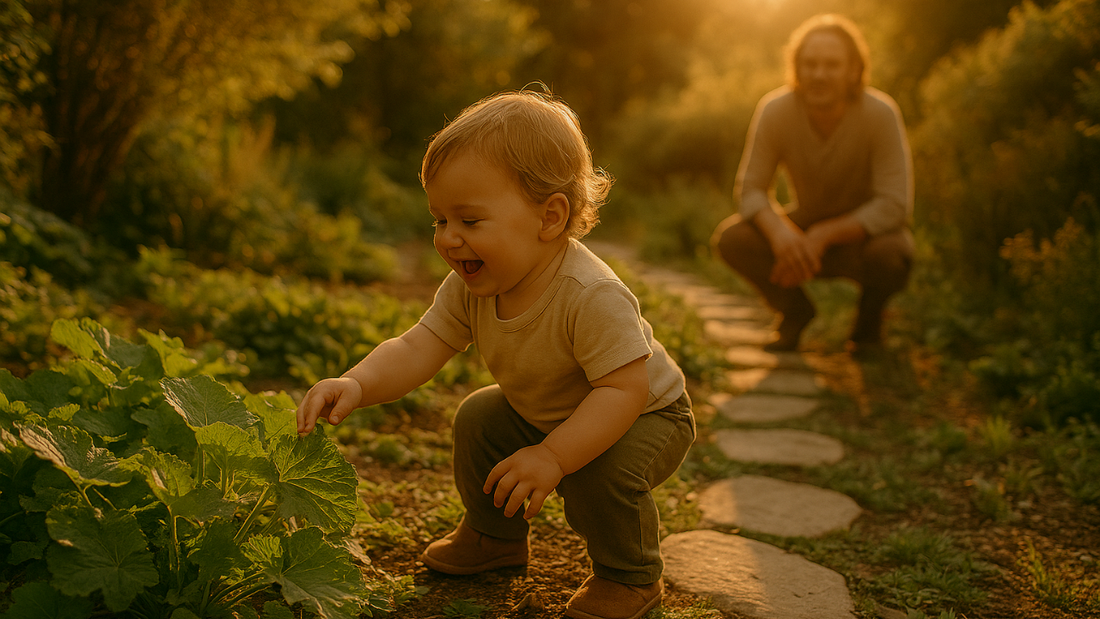
Why Outdoor Play Is Crucial (And How to Make It Educational)
LiLLBUDIn this fast-paced and screen-dominant world, the importance of outdoor play for children is being overlooked. But going outside isn't just about exhausting energy; it's brain-building, body-boosting, and soul-soothing.
From wobbly first steps on grass to nature treasure hunts, outdoor play provides opportunities for motor development, creativity, problem-solving, and emotional growth. These moments can be both enjoyable but also informative with learning by making a few simple adjustments.
Let's discover how we can turn any outdoor moment into a powerful learning experience as a parent
Why Outdoor Play Matters More Than You Think
The outdoors provides a sensory-rich environment that no toy box or tablet can replicate. Children touch dirt, hear birdsong, balance on rocks, and feel the wind—all in a single outing. With outdoor play, the child develops many skills, such as:
- Gross & fine motor skill development
- Spatial awareness and coordination
- Language development through exploration and curiosity
- Cognitive development through problem-solving and cause-and-effect learning
- Social & emotional development via collaborative outdoor games
Outdoor play is associated with improved sleep, less anxiety, and faster achievement of baby milestones, particularly if initiated early and frequently.
Physical Play Benefits That Go Beyond Muscles
Running, climbing, jumping, and balancing—these aren’t just fun activities; they’re vital for motor skill development and neurological health. The outdoor physical play can contribute to growth, such as:
- Building muscle strength and endurance
- Improving balance and coordination
- Developing hand-eye coordination
- Enhancing spatial awareness
The rough surfaces, natural obstacles, and open space outdoors provide motor challenges that indoor play just can not match.
Turning Nature into a Learning Playground
Below are a few ways to turn simple nature activities into educational opportunities that support brain development while embracing Montessori-style learning:
1. Nature Scavenger Hunts
Make a list or use picture cards for younger kids showcasing things to find, like a round rock, a yellow flower, or a dry, crunchy leaf. Use this opportunity to introduce shapes, textures, colors, or even sounds.
What it teaches: Observation skills, vocabulary, categorization, cognitive development
2. Outdoor Sorting & Counting
Collect twigs, pebbles, or leaves and sort them by size, shape, or color. Practice counting, grouping, and comparing.
Bonus: Combine this with Montessori learning toys like counting boards or stackable cups to extend the learning indoors.
3. Balance and Obstacle Trails
Try creating a path using sticks, stones, or chalk lines. Encourage your child to walk the path, jump between spaces, or crawl under branches. It is great for gross motor development, balance, and risk-taking in a safe setting.
4. Mud Kitchen or Nature Art
You can set up a station with leaves, stones, mud, and water for mixing, painting, or pretend cooking. It encourages sensory exploration, creativity, and fine motor use.
5. Storytime Under the Sky
Bring books outdoors or make up stories inspired by what your child sees: a bird, a flower, a shadow. This supports language development and makes reading a sensory-rich, memorable experience.
What About Toys? Use the Right Tools Outdoors
You don’t need much gear, but having the right toys can make outdoor learning even better. Look for:
- Montessori toys made from wood or natural materials
- Brain development toys that involve stacking, nesting, or sorting
- Open-ended items like scoops, tongs, or buckets
- Check out more such toys on LiLLBUD
Toys suitable for 1-year-olds that are durable, easy to grip, and promote cause-and-effect learning outside. These toys help little ones engage with nature while developing fine motor skills and cognitive abilities.
Baby Milestones and Outdoor Play
Exploring the outdoors can support major baby milestones in natural and fun ways. Here’s how:
- 6–9 months: Watch leaves, touch grass, sit on a picnic blanket for sensory time
- 9–12 months: Pull up on tree stumps, crawl in the yard, begin cruising outdoors
- 12–24 months: Walk, climb, point at animals, mimic outdoor sounds
- 2–3 years: Run, jump, engage in pretend nature play, follow simple outdoor rules
Every stage brings new ways to engage with the environment—and build essential skills.
The Outdoors Is the Original Classroom
Children are meant to explore, move, and learn through play. The outdoors gives everything that develops the brain and body through motor skill challenges to language-rich adventures. And the best part? You don’t need a huge backyard or fancy gear. A patch of grass, a few leaves, and a curious child are more than enough.
So step outside, slow down, and let the wild world teach. You’re not just giving your child fresh air—you’re giving them the freedom to grow.

